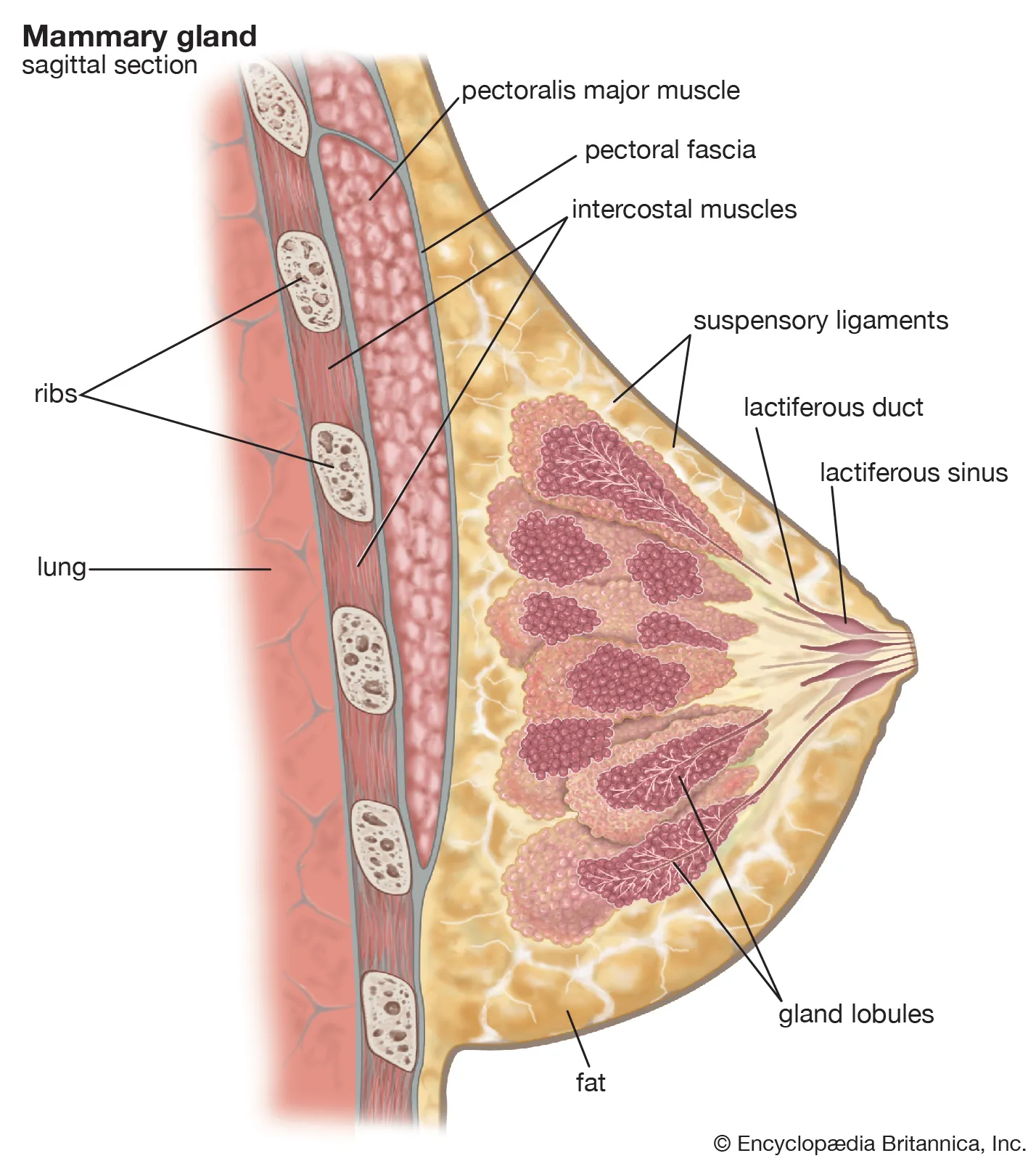Mammary glands and figure of the mammary gland – The course is designed for the basic understanding of anatomical structures and physiological functions of human body, musculoskeletal system, digestive system, respiratory system; cardiovascular system; urinary system, endocrine system, reproductive system, nervous system, hematologic system, sensory organs, integumentary system, and immune system.The aim of the course is to acquire knowledge and skills regarding anatomy and physiology.

Mammary glands and figure of the mammary gland
The mammary glands (mamma = breast), the breasts, are modified sudoriferous (sweat) glands or accessory female reproductive organs that produce milk. The breasts lie over the pectoralis major and serratus anterior muscles and between the sternum and and axilla. Internally, each mammary gland consists of 15 to 20 lobes arranged radially and separated by adipose tissue and strands of connective tissue called suspensory ligaments of the breast (Cooper’s ligaments), which support the breast.
Each breast has one pigmented projection, the nipple, with a series of closely spaced openings of ducts where milk emerges.
The circular pigmented area of skin surrounding the nipple is called the areola. This region appears rough because it contains about 18 modified sebaceous (oil) glands, which become enlarge into tubercles during pregnancy.

In each lobe are smaller lobules, in which milk-secreting glands called alveoli are found. When milk is being produced, it passes from the alveoli into a series of tubules that drain toward the nipple.
At birth, the mammary glands are undeveloped and appear as slight elevations on the chest. With the onset of puberty, under the influence of estrogens and progesterone, the female breasts begin to develop. The duct system matures and fat is deposited, which increases breast size. The areola and nipple also enlarge and become more darkly pigmented.
The functions of the mammary glands are the synthesis, secretion, and ejection of milk; these functions, called lactation, are associated with pregnancy and childbirth.
Milk production is stimulated largely by the hormone prolactin from the anterior pituitary, with contributions from progesterone and estrogens. The ejection of milk is stimulated by oxytocin, which is released from the posterior pituitary in response to the sucking of an infant on the mother’s nipple (suckling).
(Ref:- J. TORTORA, 8th edition, P-587,588 + M. Anderson, 6th,P-168,169)

(Ref:- J. TORTORA, 8th edition, P-584)
Read more:
